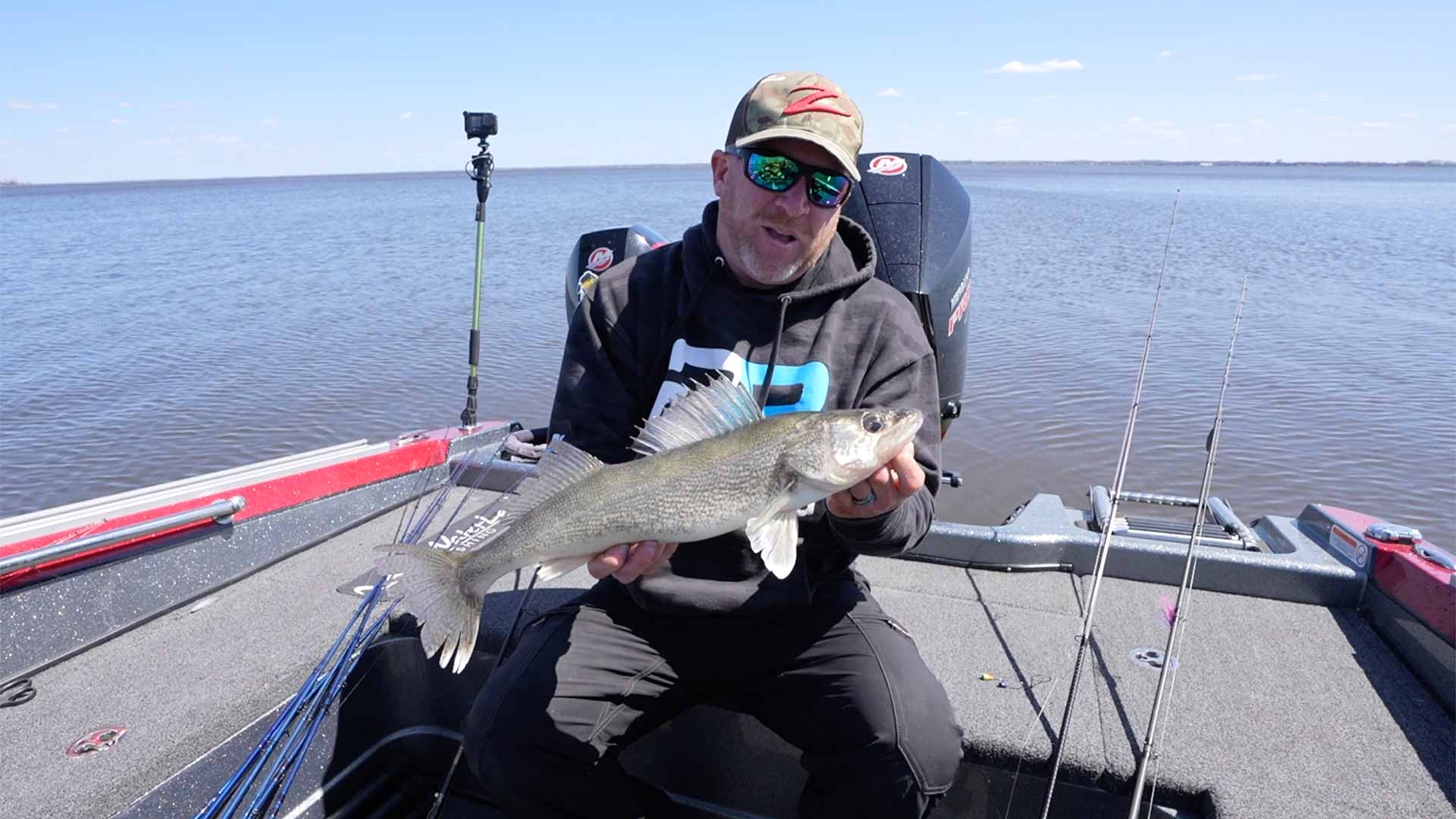Bluegill Fishing 101: EVERYTHING You Need to Know!
If crappies kick off the spring season, then bluegill fishing certainly endcap it and extend the popularity of panfishing well into the summer months. Their sheer abundance and position towards the relative bottom of the gamefish food chain makes them readily available to most anglers in almost all portions of the U.S.
There are more than a dozen species of sunfish whose range varies a great deal throughout North America, with many being only regionally available or popular. Bluegills however, whether naturally occurring or by introduction, enjoy the largest distribution and thus get the lion’s share of attention in the sunfish world, though other species can be targeted in similar ways.
Don’t let all of that “bottom of the food chain” talk fool you though, bluegills put up a fantastic fight for their size. Smallmouth bass get a great deal of attention, but a 5lb gill (if you could find one!) would give any smallie a run for its money.
Gills are also great to eat, and traditionally have been viewed as more of a food-item than a sportfish. No matter what your reason for fishing them, their appeal is several-fold. Especially once you consider the nostalgia and history of this true roots-type fishing. Just about every angler started their quest for bigger fish of all species with a simple hook and bobber, targeting gills for the first time as a young boy or girl.
Bluegill Biology 101
Bluegills are an incredible species that require a great deal of flexibility to be both the eaters and the eaten in any food-web. For various species, especially bass and pike, bluegills can make up the lion’s share of their diet, such that healthy populations of each species are wholly symbiotic. Because of this, humans can detrimentally impact the success of a number of fish species by taking too many individuals, too many big individuals, and/or too many male sunfish. A well-noted decline in the quality of bluegill sizes has been the worry of fisheries managers across North America, as legendary bluegill waters offer a small sampling of their former glory.
Much of this can be traced back to vulnerability during two key periods – both the winter months where gills heavily concentrate, and during the spawn where high numbers of males guard beds. Those males are typically the most fit, largest members, and most prolific protectorates of their species in any given water during the spawn, making them the most genetically valuable players in the process.
Their removal in heavily pressured waters leads to bluegill “cuckholding,” a process where increasingly scare parental males that sexually mature at older ages, lose ground to young and sexually mature “sneaker spawners.” These sneakers mimic female colors, rush in to fertilize eggs when parental males are absent, and thus pass on inferior genes that select for abundance over quality. Catching and keeping large spawning males no matter the water or abundance will upset the genetic applecart of the lake while making offspring more vulnerable to predation.
Prespawn Push
Inside of 60 degree water temps, most gills aren’t as heavily pursued by anglers in the prespawn period, and that’s because their locations and concentration can vary widely. They can be found suspended just off of weed flats, or up in the shallows amidst spawning crappies, and anywhere in between. The shallows at this time of year are richly oxygenated, as are many of the moderate depth areas, making them respond more to immediate needs of the moment than general migrations or spawning urges. That comes later, but for now, gills have to dodge predators and feed on what prey is most readily available.
Just like prespawn crappies, gills can be found somewhere along a depth continuum from their winter holes to their spawning grounds, just later and longer than crappies because sunfish species generally spawn in warmer water. Warm days create buggy opportunities in the shallows, whereas colder than average weather pushes them pelagic, with most gills staying more moderate depth than crappies. A good zone to focus in is that 10-20 FOW depth range during this time of year.
Towards the end of the prespawn period however, bluegills push shallow and start actively feeding and generating the energy stores they’ll need for nest establishment. Most would call this the actual spawn because of the presence of so many gills in the shallows, but the true spawn is when you see individual males guarding single nests that are stacked right next to each other.
During this time of year, I might find a few camera worthy males then leave them alone, as stressing a limited resource that I so readily enjoy during other parts of the year is flirting with disaster. Water temps in the mid to high 60’s signify the start of this shallow water rush, and this shallow period before the spawn is probably the most responsible time of year to get after them. Fish are readily abundant and active, and there’s a good mix of both sexes that are willing to bite.
Finding Them Shallow
First and foremost, the lake(s) you choose to target gills can have a great impact on your success. It’s becoming a challenge to find gill lakes that put out great numbers AND trophy members of the species both at the same time. For that reason, you should choose wisely, with the goal being either solid action or pigs-only. Many options often exist for good numbers, while quality gills exist only in places where fishing pressure has passed them over, or is spread over a great number of acres.
My best big-bluegill lakes are either large bodies of water with great predator populations and an incredible amount of room to roam, or tiny potholes with limited access. There are some diamonds in the rough, but they’ll be few and far between compared to the lake types described above. Generally speaking, lake types with big gills rarely put out great numbers of them, and water-bodies that have great numbers rarely produce consistent trophy action.
Early gills are often easily found with electronics, and especially side-imaging, but shoreline raiders are often best found with a rod and reel. If you fly-fish, you know attractor patterns are a generally “fishy” fly that looks just buggy enough to mimic a number of different insects without nailing a specific one. In a similar vein, attractor pattern bluegill baits are true search lures. You’ll have time to slow down with the live bait stuff if needed later, but first and foremost you should cover water and fish fast to find tell-tale indicator fish that’ll reveal the rest of the school.
Jigs and plastics with more aggressive colors and vibration scenarios like boot tails, or even safety-pin style spinners attached are true go-to’s, as they’re rapid-fire baits which excel when fished faster. Usually, a fish or two will call attention to a specific depth, location, substrate, or piece of cover, which you then need to process into actionable information. Some days, uncooperative fish require you to solve the puzzle with precious few pieces, while other days, the search baits will never be snipped-off in favor of slower, and more deliberate presentations.
Slowing Down
So often, indicator baits will get you started, and more stationary live bait or plastics will reap the rewards. A simple bobber rig can be transformed in the shallows by simply omitting the splitshot. A plain hook with a chunk of crawler, hung weightless under a clip-on style pencil bobber becomes an incredible tool to do the fine-detail work. Cast your weightless rig and let the hook slowly settle, watching for the bobber to tip-up ever so slightly from its side-laying position. Gills cruising the shallows have a hard time ignoring anything buggy that falls detectably into their midst.
With most baits having un-naturally heavy weights for both casting and bite detection on a tight line, here’s where fly-anglers have a distinct advantage in presenting ultra-light offerings in an extremely life-like manner.
Similarly, bigger plastics like tubes fall more slowly into the water column as well, with the advantage here being bulk. As fish pile into the shallows, it’s expected that not all of them will be trophy caliber gills, so if you’re after better than average sunfish species it’s best to upsize your offering for both fall rate and bigger gills.

Summer Spread – Trolling for Gills
After spawning and into summer, gills, especially quality ones, can be hard to come by. They exist everywhere, and nowhere at the same time. Young bluegills can be found in the shallows still, hanging in lily-pad jungles, around docks, and in shallow weed cover, but good concentrations of the “right” fish are hard to track down. As we focus so heavily on structural elements, our exceptional cartography, and pinpoint locations, summer gills often evade us with their indifference to the map. Those fish are more often found spread across large flats and weed edges, off of humps into the abyss, and small twists and turns of cabbage or coontail beds. All of these locations defy our logic at times and can require a more manual approach.
For that reason, I find trolling for panfish of all types in the summer to be my number one technique into June and beyond. Just like with spread-out walleyes on vast pieces of structure, you can cover more ground and put more baits in front of more active fish this way. It’s not a new technique by any means, as I very un-deliberately learned to drift fish in this manner from my grandpa, who like many others in his day simply let the wind do most of the work. More recently, I’ve spent time in the boat with a few anglers who re-kindled old passions I had for pulling spinners and drifting jigs.
Both techniques are simply employed, and quite deadly provided you’re running at the right depths at a consistent speed. I prefer anywhere from 0.2 – 0.5mph, and more typically on the slower end. With jigs, it’s easier to employ a host of jig sizes, ranging from 1/64 oz. to 1/16 oz., tipped with boot tail, curly tail, or tube plastics, as you use the bow-mount to slowly pull along weedlines or into open-water away from them. That way, you’re covering a variety of depths as you move through fishy zones, until the fish or electronics tell you where they’re consistently holding and what size jigs are getting you there.
The same is true for spinners, with butterfly and smile blade styles being perfect for gills given their penchant for running true at slow speeds. With these blade styles, you can crawl along and still keep that blade moving, which is something that can’t be said for traditional spinners. Those blades are effective for gills too, but usually closer to dark as fish activity levels rise when they’re on the feed, and they have no problem ranging far or quickly for a fast-moving bait.
A simple bullet-nose sliding sinker in the 1/16 oz. to 1/4 oz. size rigged in front of your spinner rig’s swivel will cover most of your bases as you experiment with speed and delivery at depth. Start with a short cast behind the boat and move along at a desired speed until you encounter weeds or fish, taking careful note of the depth of contact for each.
Employ side-scanning to help narrow the search for pods of fish, as you pull through them with a variety of sinker sizes, blade styles, and bait until you dial in a recipe for the day. This type of fishing is both frustrating and enjoyable, as you plow through a host of variables, constantly testing the previous best until you discover a new best in the quest to find more and bigger fish. Ultimately however, the more you do it on any given day, the more you tip the odds in your favor as you continually gather data, process it, and perfect the presentation.
Gill Conservation Cheat Sheet
No matter how, when, or where you fish gills, here’s the best advice I can muster given my experiences with dwindling panfish stocks and the quest to preserve quality bluegills.
Self-Limit – Limit your take rather than taking a limit, knowing that small lakes are especially vulnerable during the spawn.
Make a Plan – Knowing how much you need for a meal, when you’ll eat that meal, and the goal for the day makes it easy to get what you need without killing several limits of gills.
Measure your Fish – Knowing how rare a true 10” measured gill really is will give you a whole new appreciation for the resource.
Selectively Harvest – Set your own personal limits on size, such that you keep only 7 – 9” fish rather than high-grading only the largest fish you catch.
Spawning Males go Back – If you do choose to fish spawning gills on beds, quickly release the large males – identified by the larger/longer ear tabs and bright blue and red breeding colors.
Spread The Love – Distribute what you take across several lakes if you must, rather than targeting a specific water body only.
For those of you who need help identifying male from female bluegills, here’s a visual aid:









